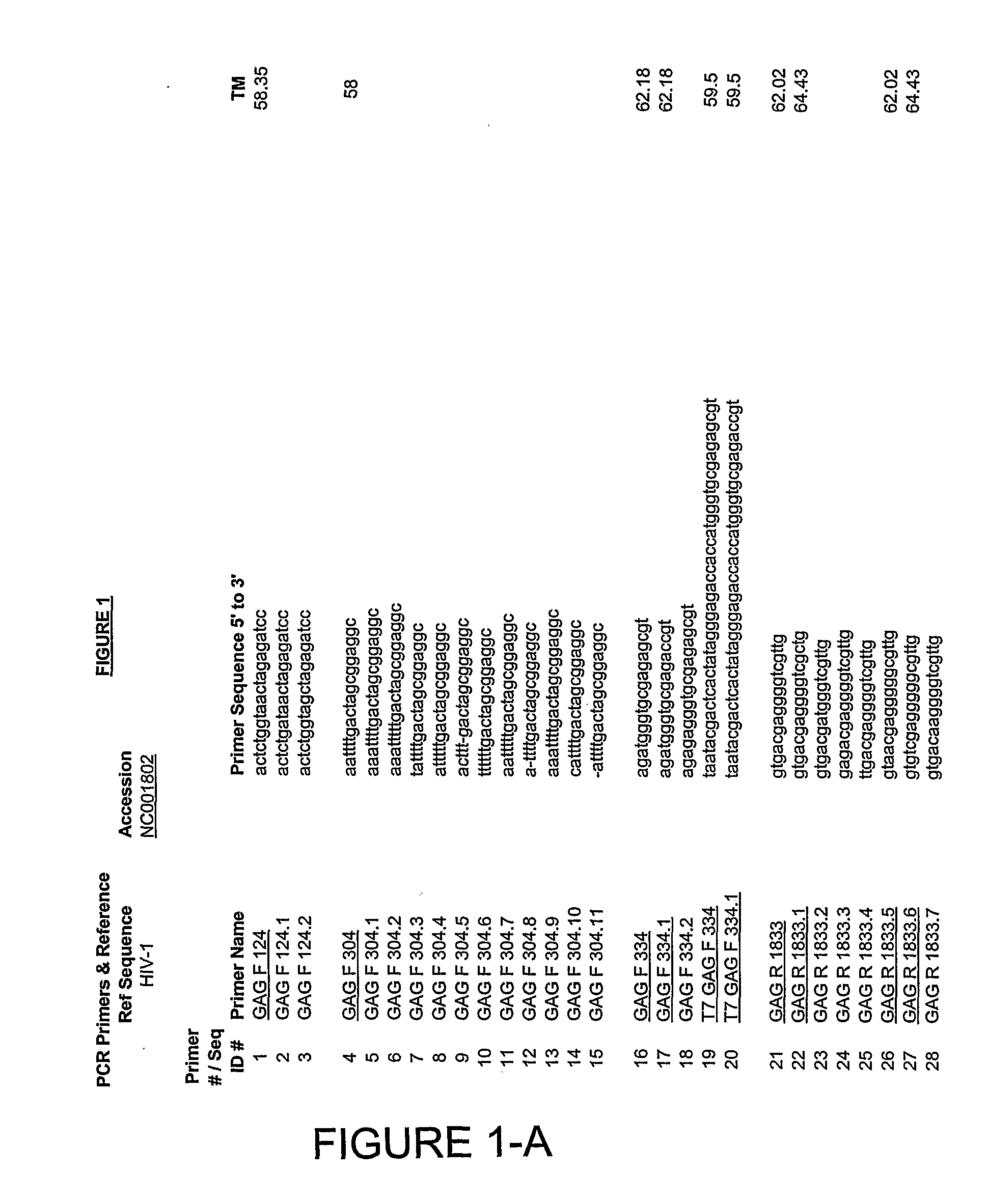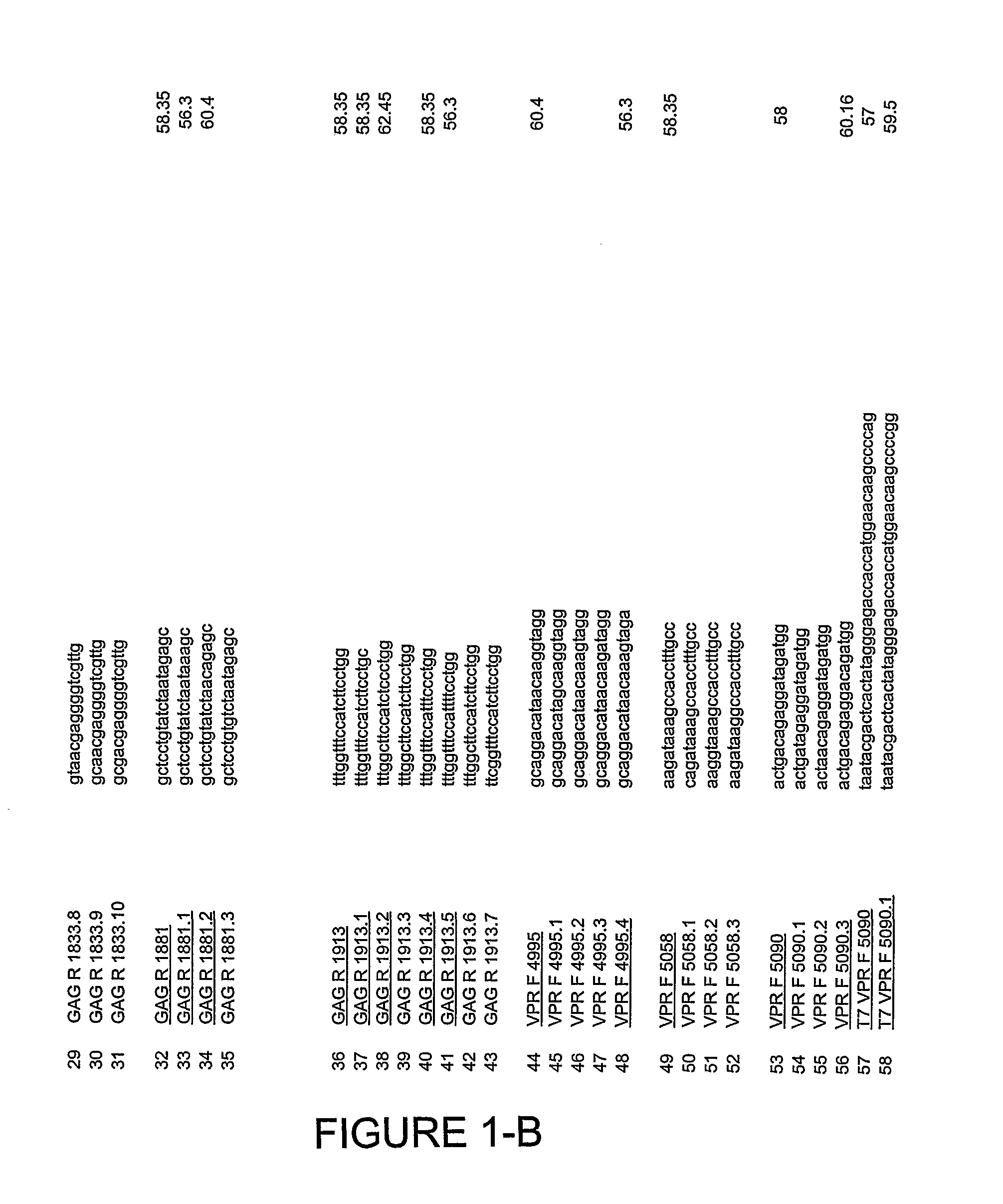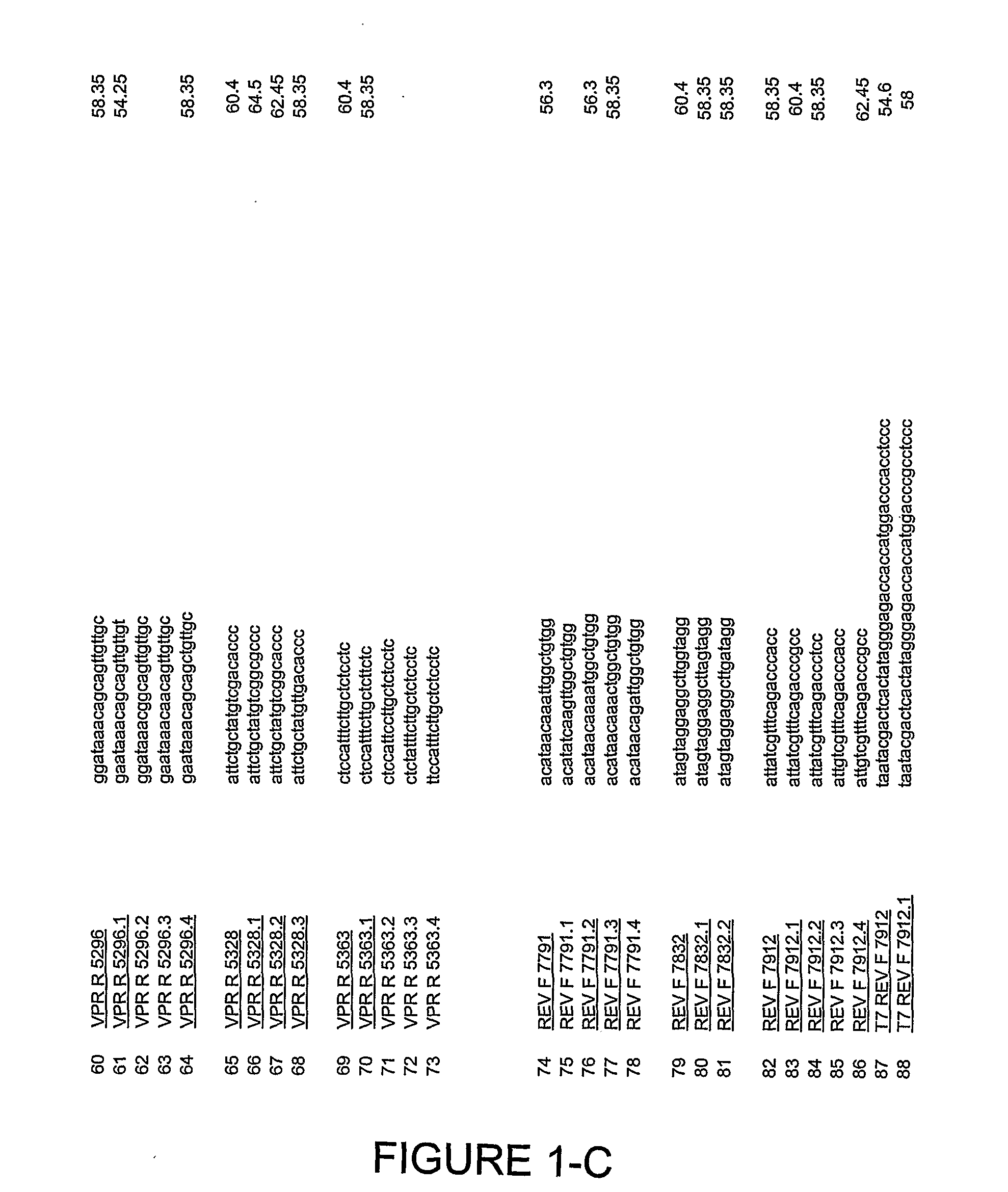Strain-Independent Amplification of Pathogens and Vaccines Thereto
a technology of pathogens and strains, applied in the field of strain-independent amplification of pathogens and to patient-specific vaccines, can solve the problems of difficult to produce effective vaccines, difficult continuous administration of these therapies, and high cost, and achieve the effect of avoiding the negative effects of pathogen infection
- Summary
- Abstract
- Description
- Claims
- Application Information
AI Technical Summary
Problems solved by technology
Method used
Image
Examples
example 1
Selection of Primers for Amplification of Multiple Variants of HIV
[0213]Analysis of the 49 full length HIV isolates deposited in Los Alamos National Database revealed highly variable regions in the HIV genomes as well as regions outside of coding sequences of selected antigens with lower variability. Those relatively conserved regions, mostly outside of the open reading frames of gag, vpr and rev served as a template for design of oligonucleotides to be used in PCR amplification. Since mutations additional to those present in identified sequences listed in Los Alamos Database could occur in individual patient, multiple regions for primer annealing were determined. Primers complimentary to these isolates were analyzed. Nucleotide regions with relative sequence conservation among isolates were preferred for primer selection. The following parameters were applied to primer design: primers were to have a Tm of 55° C.-62 C, a length of about 17-20 bp, were not predicted to form homodimer...
example 2
Determination of Amplification Conditions for Gag Primers
[0217]Further reduction of the PCR reaction number was achieved by multiplexing PCR primers for each antigen. PCR primers were grouped in basis of their Tm. Then permutations containing each group of forward primers with each group of reverse primers were tested in a PCR reactions at different temperatures. In order to reduce risk of working with infectious material during initial selection of primers, divergent non-infectious near full-length HIV clones obtained from NIH AIDS Research and Reference Reagent Program were used to test the primer designs and optimize reaction conditions.
[0218]10 ng of noninfectious HIV clone pBKBH10S plasmid template (NIH AIDS Research & Reference Reagent program Cat #194) was used in a 25 μL PCR reaction containing 1×; Pfu buffer, 0.2 mM each dNTP final concentration, 0.4 μM final concentration of each primer and 1 unit of PFU Hot start (Stratagene) polymerase. The reaction was heated at 95° C. ...
example 3
Multiplex PCR Amplification of Multiple Variants of HIV Per Reaction
[0219]There is evidence that HIV is present in a single individual in a few forms or quazispecies which arise due to a mechanism of mutational escape from any pressure present in this individual (CTL or small molecule). Evidence also exists that patients may be superinfected and host various HIV strains at the same time. The power of current technology is in its ability to amplify all HIV variants present in the patient using conditions stringent enough to amplify a specific product yet promiscuous enough to allow for a single base pair nucleotide mismatch between primer and target sequence.
[0220]To experimentally test our ability to amplify multiple HIV variants in the same reaction different HIV templates were mixed in a single PCR reaction. Molecular clones encoding sequences coding for various HIV isolates used in this experiment are listed below.
Clone nameCountry of originHIV cladeAccession numberpBKBH10SFrance...
PUM
 Login to View More
Login to View More Abstract
Description
Claims
Application Information
 Login to View More
Login to View More - R&D
- Intellectual Property
- Life Sciences
- Materials
- Tech Scout
- Unparalleled Data Quality
- Higher Quality Content
- 60% Fewer Hallucinations
Browse by: Latest US Patents, China's latest patents, Technical Efficacy Thesaurus, Application Domain, Technology Topic, Popular Technical Reports.
© 2025 PatSnap. All rights reserved.Legal|Privacy policy|Modern Slavery Act Transparency Statement|Sitemap|About US| Contact US: help@patsnap.com



